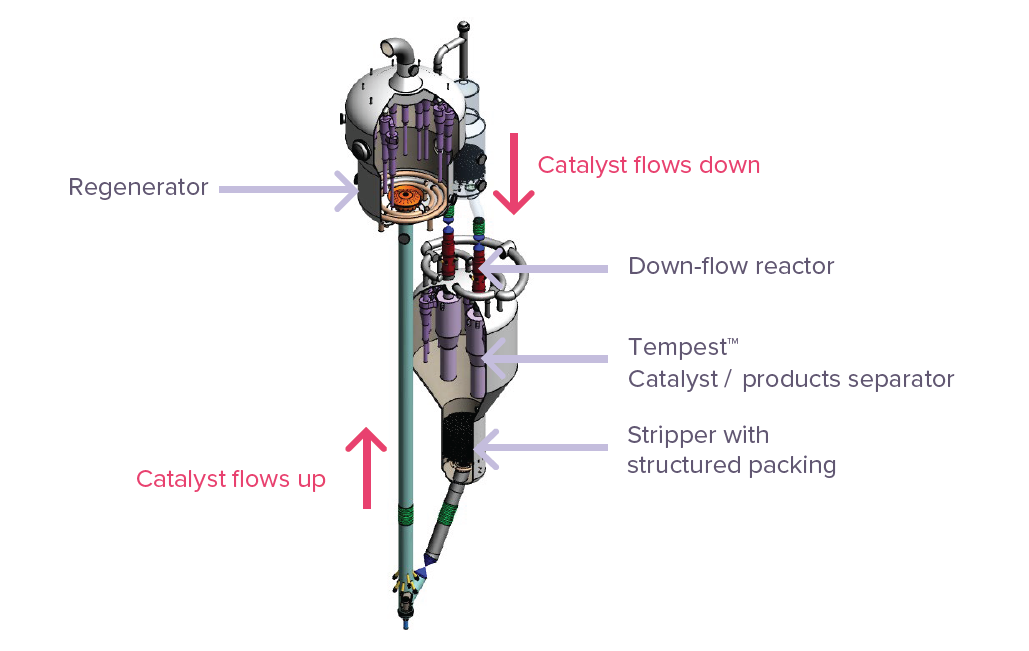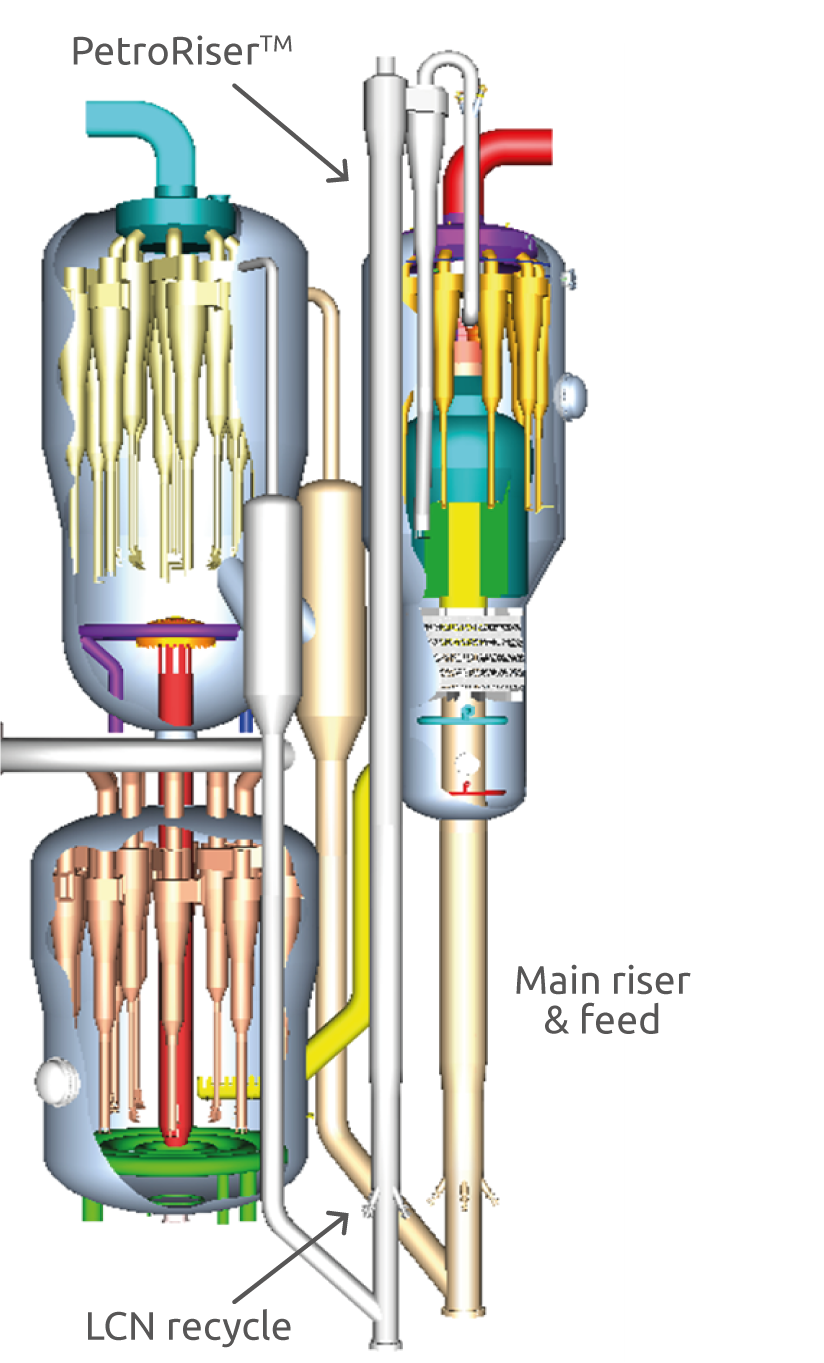FlexEne™
Axens has developed the new FlexEne™ technology to expand the capabilities of the FCC process which is the main refinery conversion unit traditionally oriented to maximize gasoline and at times propylene production.
FlexEne™ is an innovative combination of two well-proven technologies: Fluidized Catalytic Cracking (FCC) and Oligomerization (Polynaphtha™). Combined in an innovative way, they can significantly improve product flexibility to control the balance of propylene, gasoline and diesel production with a low capital investment. This FLEXibility is achieved by selective oligomerization of light FCC alkENEs (olefins) for recycle cracking in the FCC.
By adjusting the catalyst formulation and operating conditions, the FCC process is able to operate in different modes: Maxi Distillate, Maxi Gasoline and High Propylene. This provides the product flexibility required by the market.
7 references
for FlexEne™ recorded since its introduction
Proven
Flexibility & Simplicity
High
Return on Investment


